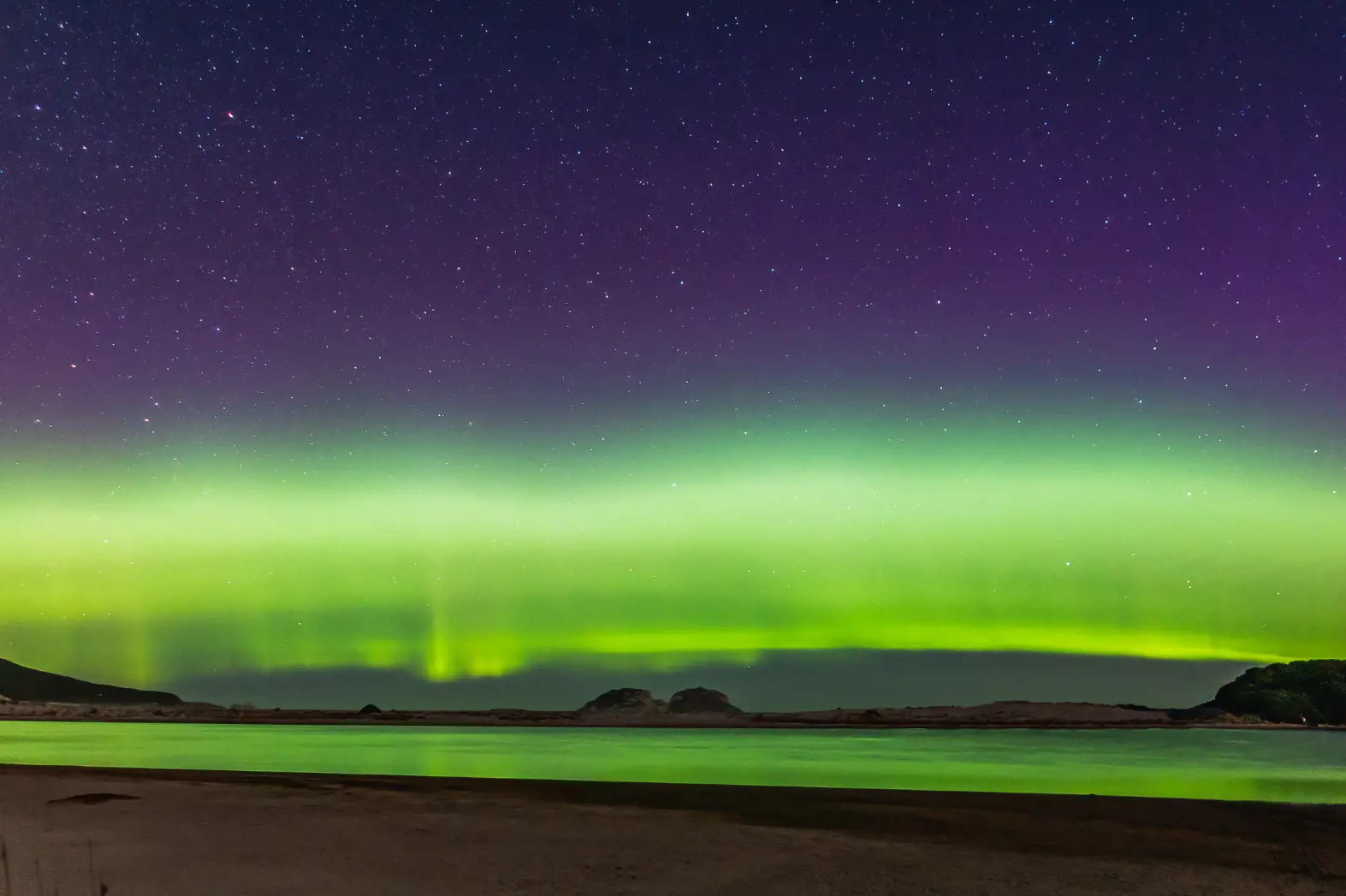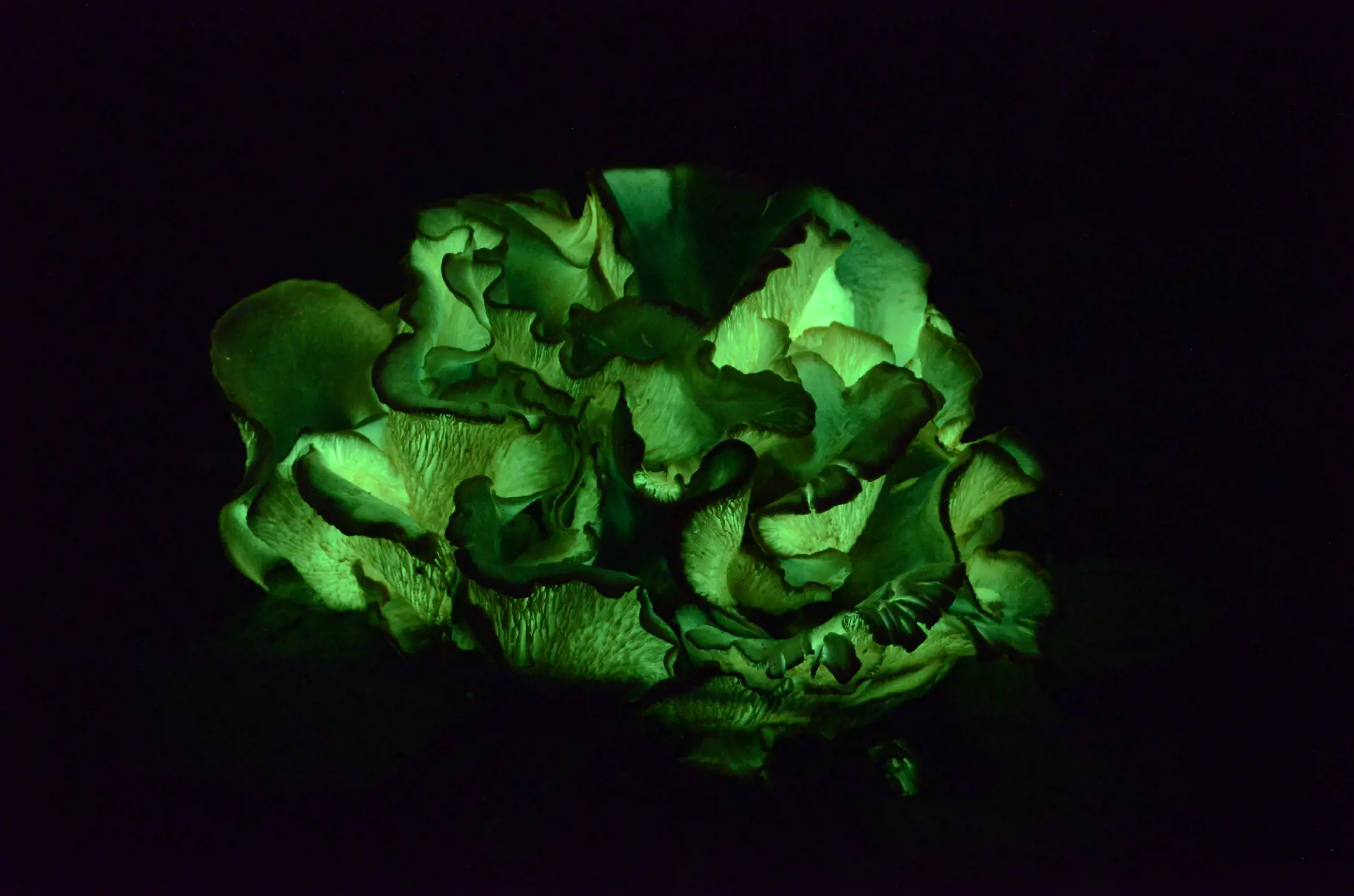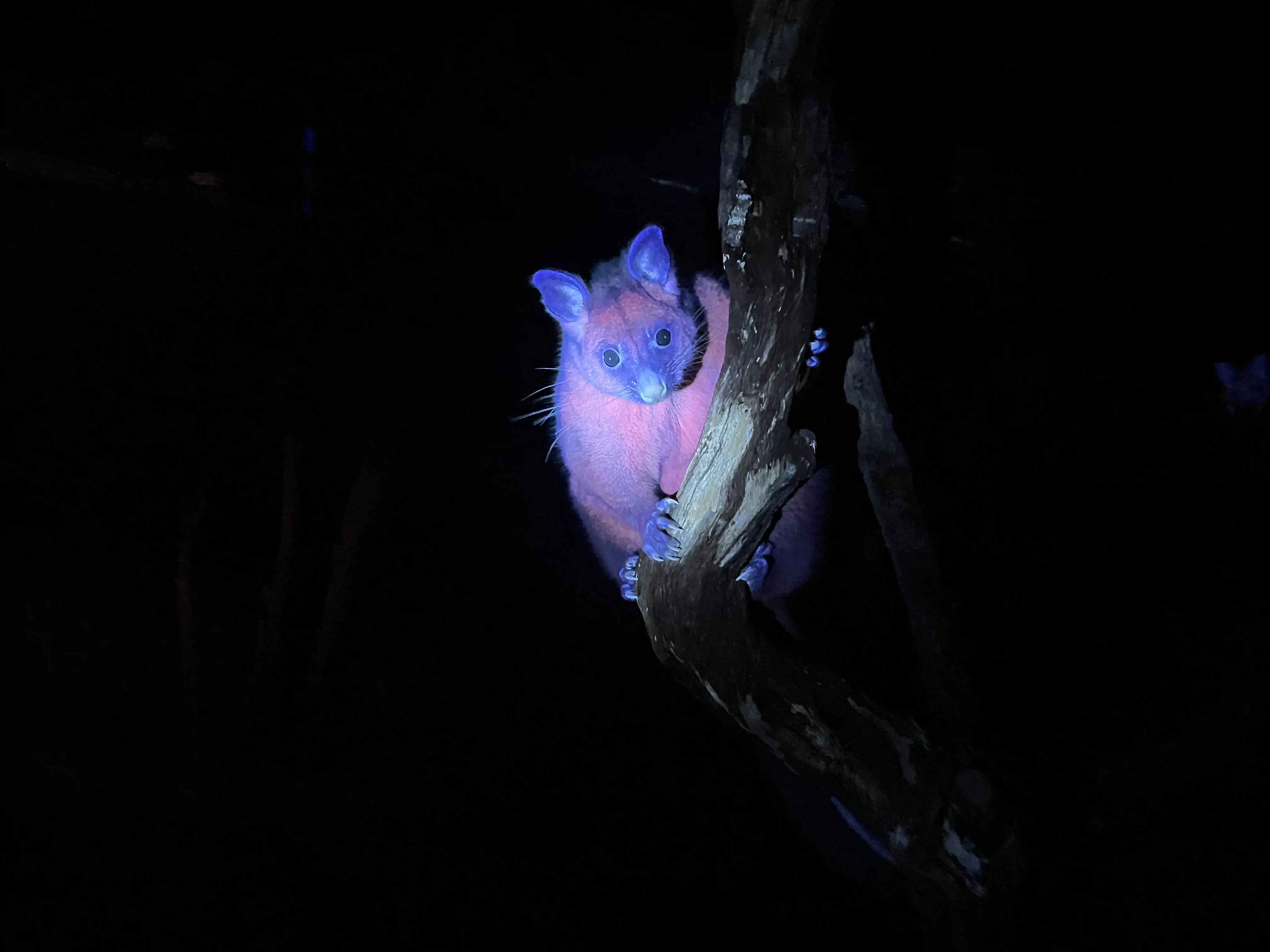
The Southern Lights get plenty of love, but there’s more that glimmers and glows here. Peer into the inky Tasmanian night for sparks of nature’s brilliance.
There’s something otherworldly about things that glow in the dark: the swirling beams of an aurora, glittering sparkles in the sea shallows, shady patches of wilderness illuminated by glow-worms and ghost mushrooms...even fluorescent mammals.
Jellyfish and bioluminescence expert Dr Lisa Gershwin believes our fascination with nature’s glowing phenomena stems back to childhood.
“When we're children, we believe in magic. Then we grow up and we discover that magic isn't real. But these things, these are magic that is real,” Gershwin says.
Gershwin, who has a PhD in jellyfish and has been working as a research scientist for 30 years, has long been captivated by things that glow.
“Tasmania has got glow in spades,” she says.
“It's not unusual to get the aurora in the sky and the bioluminescence in the water at the same time. We've got so much wildlife down here…we can see it so easily and it glows so magnificently.”
This abundance led her to develop Glow Show in Hobart, an immersive studio where visitors learn about these natural marvels. She’s since expanded her offering to include on-the-ground tours.
“Seeing these things, if you'll pardon the pun, in a new light … begs us to think about what else we don't understand. And I think that's part of what makes it so fascinating for me, as a scientist.”
Shimmering skies: see the Southern Lights in Tasmania
The flickering rays of the Aurora Australis, or Southern Lights, ripple across Tasmania’s skies reasonably regularly.
The aurora’s colours become more vibrant when captured by camera. However, Gershwin says that even without a lens, “it's still amazing, especially when you actually see the beams rising up into the sky, dancing across the horizon.”
The Southern Lights can appear year-round when the sun releases charged particles towards the Earth. Gershwin’s tip? “For reasons I haven't seen explained anywhere, the colour is actually richer over water,” she says.
If there's an aurora forecast, take your camera to a shore with a southern vantage for a more vibrant viewing experience.

Aurora Australis, South Coast Track.
Sea sparkles: marine bioluminescence in Tasmania’s waters
Sea sparkles, or marine bioluminescence, are tiny creatures that glimmer bright blue in Tasmania’s shallows when the water is agitated: “So beautiful, it'll take your breath away,” Gershwin says.
During the day, sea sparkles appear as an orange or pink-tinged haze near the water’s surface. If you see these tell-tale signs, you’ll know it’s worth a return trip after dark.
Sea sparkles are an introduced marine pest, which “creates kind of an interesting dilemma,” Gershwin says. “They're the Beauty and the Beast, aren't they?”
While sea sparkles show a slight preference for warmer weather, their presence is linked to nutrients in the water, rather than the time of year, and Gershwin says some of the island’s best blooms have occurred during winter.


Glimmering grottoes: where to find glow-worms in Tasmania
In the shadowy crevices of Tasmania’s caves, leafy hollows, arched railway tunnels and disused mine shafts exists another kind of glow.
Glow-worms appear like constellations of blue stars in the darkness. The light shines from their tails – a lure to attract and trap insects.
These beguiling bioluminescent creatures can be found in dark pockets across the island, including Marakoopa Cave in Mole Creek Karst National Park, Gunns Plains Caves in the north west, and Russell Falls in Mount Field National Park where a grotto of glow-worms lights up alongside the walking track to the falls.
Fascinating fungi: on the hunt for ghost mushrooms
Rotting tree stumps and damp forest floors are home to yet another bioluminescent marvel. Ghost mushrooms might fly under the radar during the day, but at night their soft glow makes them a favourite of photographers and fungi-fans.
Ghost mushrooms appear to be far more vibrant when photographed. “Our eyes struggle to see the colour at night. But the camera can see everything,” Gershwin says. “They go electric green.”
Ghost mushrooms can be found right across Tasmania, particularly during autumn and after rain. Find them during the day, then return in the dark with a tripod and camera, ready for long exposure shots to capture their radiance.

Animals that glow: spot Tasmania’s fluorescent wildlife
With a rich diversity of wildlife, Tasmania is a hot-spot for glowing creatures: think bubblegum-pink possums, Tasmanian devils with blue-green ears, white and blue echidnas, and mint-green wallabies.
The colours are caused by proteins in the animals’ fur or feathers. “We have no idea why they glow,” Gershwin says, “because the observations of these things are racing ahead of the science.”
“We've been playing with bioluminescence, which is the chemistry of how organisms make their own light internally. But we're now switching over to physics, where we make them glow by shining a UV light,” Gershwin says.
To see glowing wildlife, head out in the dark; luckily, many of the island’s marsupials are nocturnal.
Gershwin says the famous evolutionary biologist, Charles Darwin, said it best in his book The Origin of Species: “There is grandeur in this view of life.”
“I think that sums up perfectly what it's like to experience nature that's glowing,” Gershwin says.
Glow-in-the-dark FAQs
Where to see the Southern Lights in Tasmania
Tasmania’s proximity to the South Pole makes it a prime place for aurora spotting. In the dark of night, when the celestial conditions are right, the Aurora Australis, or Southern Lights, can be seen across the island, wherever there’s an unobstructed view of the southern horizon. Here are some top spots to see the Southern Lights in Tasmania.
Where to see bioluminescence in Tasmania
Sea sparkles (Noctiluca scintillans) bloom along Tasmania’s coastlines. Also known as marine bioluminescence, the presence of sea sparkles is determined by what’s going on in the water. When the oceanic conditions are right, they can be seen in bays, beaches and harbours right around the island’s fringes. Best of all, you don’t need any special equipment to see them – movement in the water makes them shimmer and shine.
What are glowing mushrooms?
Ghost mushrooms (Omphalotus nidiformis) often occur in clusters, glimmering softly in Tasmania’s damp and forested corners. Gershwin describes them as “creamy-white, with an irregular margin”. They have gills extending up the outside and a centre that’s typically orange, yellow or brown. But don’t be fooled – while they may look similar to oyster mushrooms, ghost mushrooms are definitely not edible.







